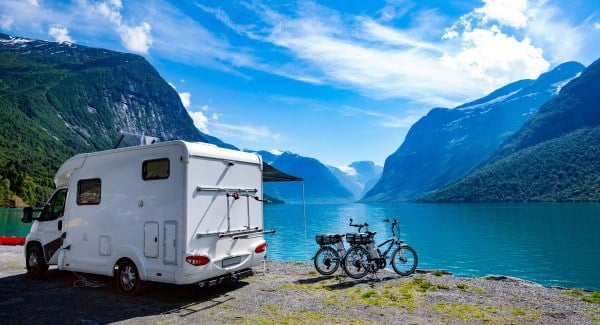
Time, they say, is the newest luxury item. If you’ve got it, use it well, especially when it comes to travel.
And if you’ve had the chance to eat the mushroom gnocchi in the fancy restaurant on Brittany Ferries, which sails between France, Spain, and England, you know there are ways to travel well without racing across the globe, or breaking the budget.
“The general perception is that travel time is wasted time,” says Janet Dickinson, Professor of
Tourism at the University of Bournemouth, “that you have to do it as short and quickly as possible.”
But, more and more, travellers are warming to the idea that this doesn’t have to be the case, and that you might actually be losing out by dashing off to your destination. A new kind of travel has us taking our merry time, staying closer to home, seeing the journey as part of the
holiday, from the moment you step out the door, and helping the
environment to boot.
Not that we need to stay out of the air entirely, but the idea is to diversify and be imaginative, to “rethink the travel experience, so it’s not just about how quickly and cheaply I can get somewhere”, adds Dickinson.
You’ll also break out of the “travel bubble”, as James Chilton, founder of Rethink Tourism, describes it. Many trips, he explains, are shallow. You leave home, “go to a bubble of an airport, a bubble of a vehicle, an accommodation bubble, and then stay on the beach”. We’re missing out on really seeing places.
And missing benefits for the soul: Travelling slow and low, you know where you are on the globe, how far you’ve come, and exactly how you got there. You see the changes in landscape, local architecture, the
environment, meet the locals, and taste their food.
It’s also good for your health. “In general, slowing down is more conducive to being relaxed and less stressed,” says Michael Hogan, a senior lecturer in psychology at NUI Galway. As with forms of mindfulness practice, when the mind is calm and settled, it’s possible to notice much more of the environment around you, Hogan says.
“What’s needed is a “reconceptualization of time,” explains Dickinson. “Families are choosing to slow down, spending time on trains, playing games, having meals together.” And recognising we have misconceptions about how long travel takes — a two hour flight and an eight-hour train ride might be much the same after long check-ins and far-off airports.
Slower might also be more expensive — the lure of cheap flights to warm places is sometimes irresistible — but can incorporate less expensive, more fulfilling activities like camping, cycling, or hiking.
Overnight trains in Europe are an option, Dickinson suggests, both for the experience of the train and travel includes the cost of a night’s accommodation.
We’re also living next door to spots visitors come from around the world to see.
“In western Europe, most people have quite spectacular places to visit in a very short range,” says Dickinson of places we haven’t explored as much as we think.
If the true sign of status is having time, there’s always the transatlantic ship.
The Queen Mary II takes you from Southampton to New York.
A bit of the splendor of Titanic meets the cheesiness of Dirty Dancing, it’s a surprisingly affordable, week-long, food-filled, recuperative journey.
Many consider the voyage a
vacation in itself, with oodles of time, to rest, read, think, play, walk the decks, chat with family, meet fellow travellers, and take in the expanse of the ocean.
You can even take the boat over and back — travel with no real
destination.
These journeys, experts agree, are the trips we remember most.
[“Source-irishexaminer”]